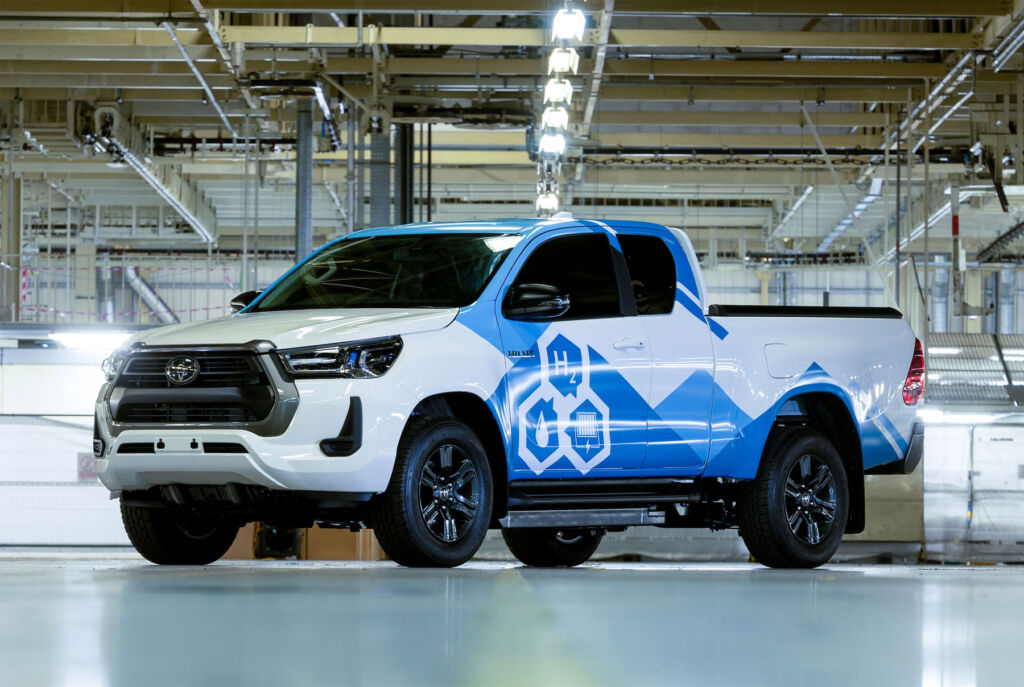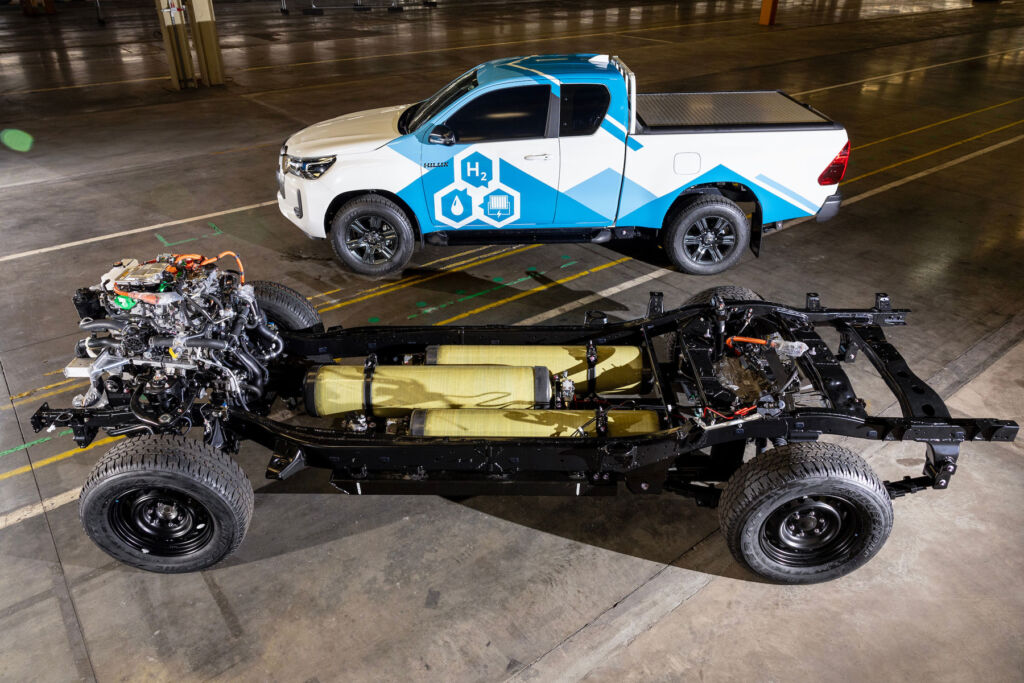

Recently, we published a feature highlighting why vehicles powered by Hydrogen Fuel Cells systems are a sensible solution in these current times. Although much of the world believes electric vehicles are the ‘only way forward’, there are viable alternatives. As luck would have it, Toyota has unveiled one of them in the form of its British-built Hilux prototype pick-up, which just so happens to be powered by a hydrogen fuel cell system.
No doubt many will have seen recent headlines such as “Worldwide lithium shortage could come as soon as 2023” and the data backing up the lack of appetite for second-hand electric cars, or they perhaps caught wind of the increasing number of battery fires or the potential for additional taxation due to increased road wear and break dust and so on.
Pure electric-powered vehicles were once touted as the undisputed panacea for the world’s problems; however, recent news and informed alternative viewpoints have put a spanner in the workings of many minds, causing some to question whether or not they want to be on the side of those who’ve invested a considerable amount of money in what could be rapidly depreciating and unwanted technology.
All forms of transport powered by renewable energy (electrical, hydrogen and solar) are a good thing; however, whether one is better than the other is still up for debate, and people’s ability to decide is being clouded by huge finance in the form of advertising and publicity to sway opinions.


Toyota’s desire to explore all possibilities
Toyota, the Japanese automotive giant, is one of just a handful of car manufacturers researching the benefits of hydrogen power. Today, the company has unveiled a British-built prototype hydrogen fuel cell-powered Hilux, which demonstrates its strategy for achieving carbon-free mobility.
The company is currently developing a range of powertrain solutions to suit different needs and operating environments, including hybrid electric, plug-in hybrid electric, battery electric and hydrogen fuel cell technology.
The Hilux prototype pick-up was revealed at the company’s manufacturing plant in Burnaston, Derby, and was a joint project involving a consortium of businesses supported by funding from the UK government.
The Hilux’s powertrain uses elements from the Toyota Mirai hydrogen fuel cell electric saloon. It is a tried and tested technology that has been proven over the Mirai’s ten-year lifespan. Like electric battery power, hydrogen is also a friend to the environment. When driven, the only by-product from a car powered by hydrogen fuel cells is pure water.
The prototype uses three high-pressure fuel tanks, which gives the vehicle a range in excess of 365 miles, a distance greater than what would be achieved by a similar vehicle powered by electricity. The battery, which stores electricity produced onboard by the fuel cell, is positioned in the rear load deck, avoiding loss of cabin space.
The history of the Hilux Prototype Project
The project began with a feasibility study in early 2022. The funding came from the UK Government through the Advanced Propulsion Centre, a non-profit organisation supporting the development of cleaner technologies and new mobility concepts.
The design and development program started on July 1st 2022, and the prototype’s construction commenced on June 5th of this year. Three weeks later, the first vehicle was completed, and ten will be built by the end of 2023.
Ricardo, one of the consortium partners, in parallel with teams at TMUK, will be conducting a detailed evaluation of the vehicles over the coming months.
The fact that the UK Government helped fund the project does provide hope for those unconvinced by the pure electric argument, and should Toyota’s Hilux prototype make its way into full production, it could make life much simpler for national infrastructure planners. Perhaps the only downside in some people’s minds is the government will no doubt find a way to tax the water being left on Britain’s roads.
Read more motoring news, guides and features here.
